We had arrived in Agra to see the Taj Mahal, but as our first day here was raining; and incredibly grey, we decided to put that off till the following day.
Instead we paid a visit to Fort Agra which stood across an open expanse of meadow, slightly up river from and on the same bank as the Taj.
An important Indian fort throughout history, this place has seen the imprisonment of the Raj who commissioned the Taj Mahal and also the leadership of successive governments. The East India Company operated out of the fort for a while, using it as a prison.
The size of the place was immense and we spent some time looking around the many sandstone or marble inner buildings. Large curated gardens and waterways split up the structures, and the trees were full of green parrot-like birds and tame chipmunks.
The next day saw an end to the rain and so we had a lunch in a nearby café before heading into the complex. As foreigners, it cost us £7 each for tickets, whilst Indians get in for 10 pence apiece. Whatever the cost is was worth every penny, for when we passed beneath the southern gate which opens into a large gardened area, I just stopped and stared at the huge, symmetrical mausoleum in front of me. The Taj Mahal is without doubt the most beautiful building I have ever seen. Even in the grey light of a cloudy day, the white marble stonework shimmered and captured all thoughts as we both stood enchanted.
It’s difficult to describe just how stunning this ‘Great Wonder of the World’ really is, but some adjectives might help: breath-taking, magnificent, awesome. The Taj Mahal demonstrates the meaning of all these words and many others as you stand and take it all in.
Finally we broke from the spell we were under and stepped forward to explore the grounds. Large well-kept gardens, broken up into rectangles by the path; and by water courses which contained fountains, stood in front of, and below, the great structure. Behind the Taj stood a large sweeping river, which meant that from the gardens and even from the gate at the entrance, there were no buildings to ruin the skyline behind.
The Taj Mahal was built in the 1600s as a mausoleum for the Raj’s favoured wife. She died after bearing him fourteen children and was interred under the large dome in the middle of the structure.
The large cuboid part to the structure is supposed to represent earth, with hard angular lines, whilst the dome atop is meant to represent the peace and perfection of heaven, with its smooth rounded nature. Also the writings that you can see climb the front of the building are carefully set to be larger in size at the top of the building to account for perspective. This ingenious structure came at an immense price for the Raj who spent 40 million rupees on the construction. In the day 15 rupees was able to buy 10 grams of pure gold- to put that into a little perspective!
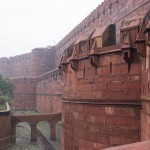
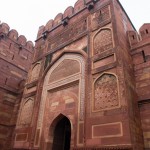
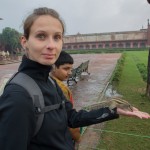
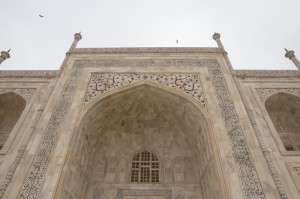
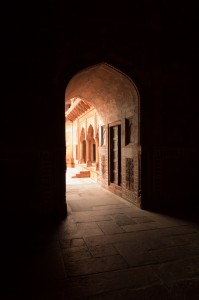
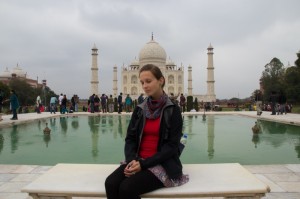

the look on your girls face is crazy, its like she is waiting to be taken away by the squirrel!